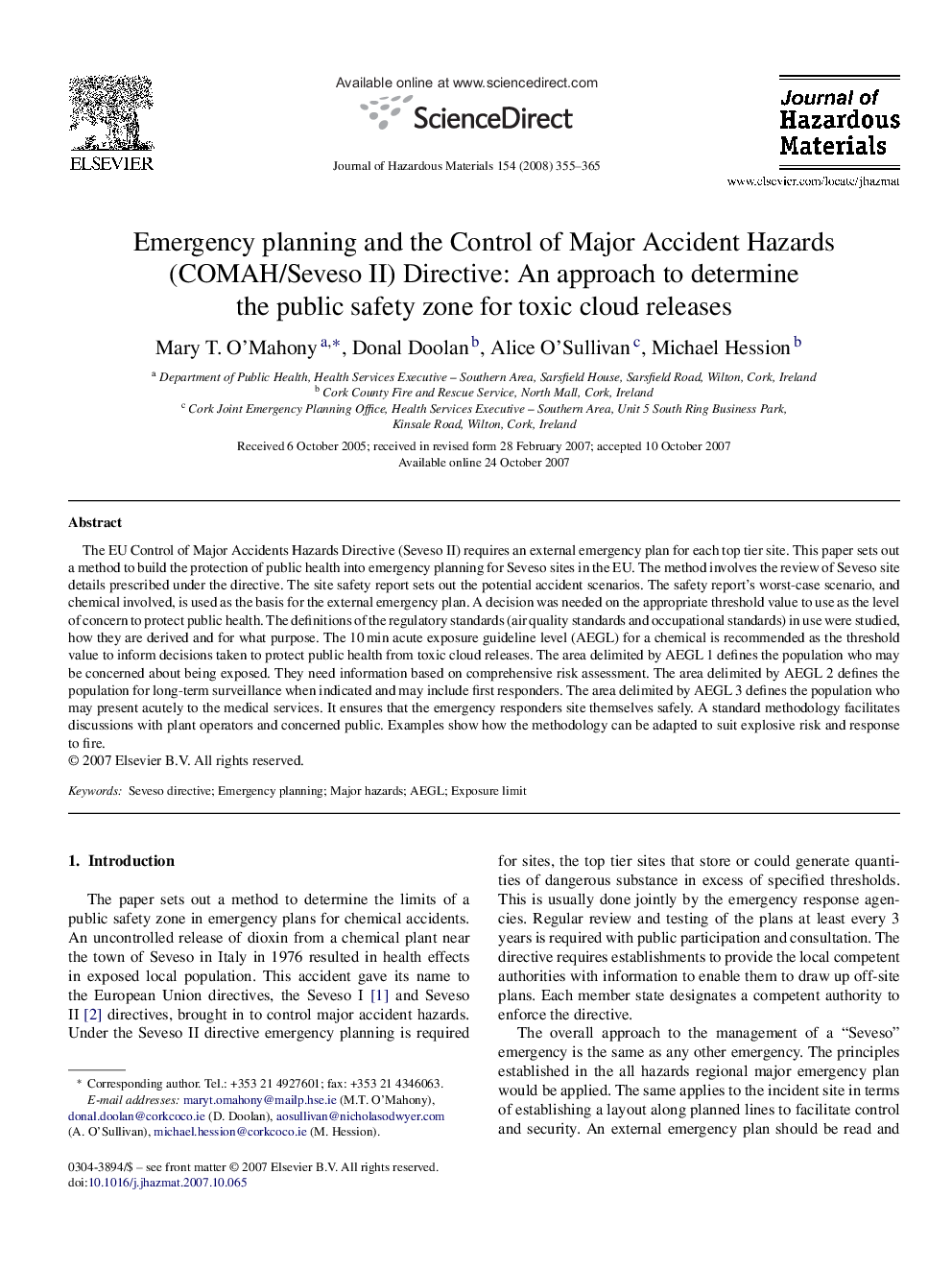| Article ID | Journal | Published Year | Pages | File Type |
|---|---|---|---|---|
| 583605 | Journal of Hazardous Materials | 2008 | 11 Pages |
Abstract
The EU Control of Major Accidents Hazards Directive (Seveso II) requires an external emergency plan for each top tier site. This paper sets out a method to build the protection of public health into emergency planning for Seveso sites in the EU. The method involves the review of Seveso site details prescribed under the directive. The site safety report sets out the potential accident scenarios. The safety report's worst-case scenario, and chemical involved, is used as the basis for the external emergency plan. A decision was needed on the appropriate threshold value to use as the level of concern to protect public health. The definitions of the regulatory standards (air quality standards and occupational standards) in use were studied, how they are derived and for what purpose. The 10Â min acute exposure guideline level (AEGL) for a chemical is recommended as the threshold value to inform decisions taken to protect public health from toxic cloud releases. The area delimited by AEGL 1 defines the population who may be concerned about being exposed. They need information based on comprehensive risk assessment. The area delimited by AEGL 2 defines the population for long-term surveillance when indicated and may include first responders. The area delimited by AEGL 3 defines the population who may present acutely to the medical services. It ensures that the emergency responders site themselves safely. A standard methodology facilitates discussions with plant operators and concerned public. Examples show how the methodology can be adapted to suit explosive risk and response to fire.
Related Topics
Physical Sciences and Engineering
Chemical Engineering
Chemical Health and Safety
Authors
Mary T. O'Mahony, Donal Doolan, Alice O'Sullivan, Michael Hession,
